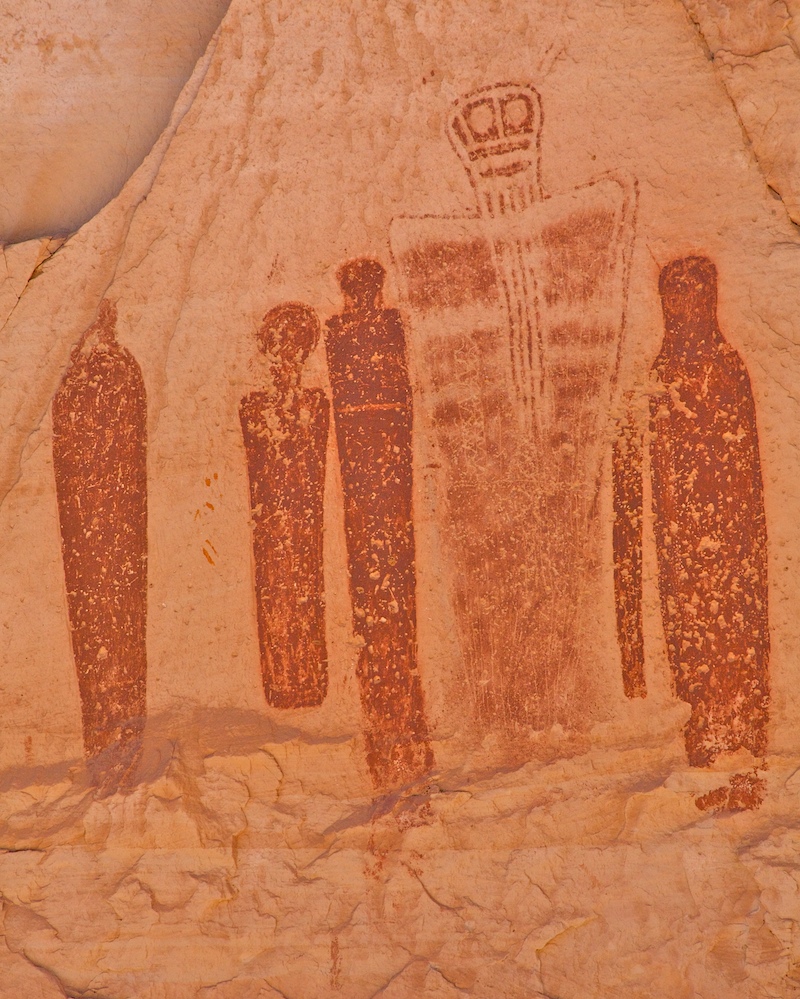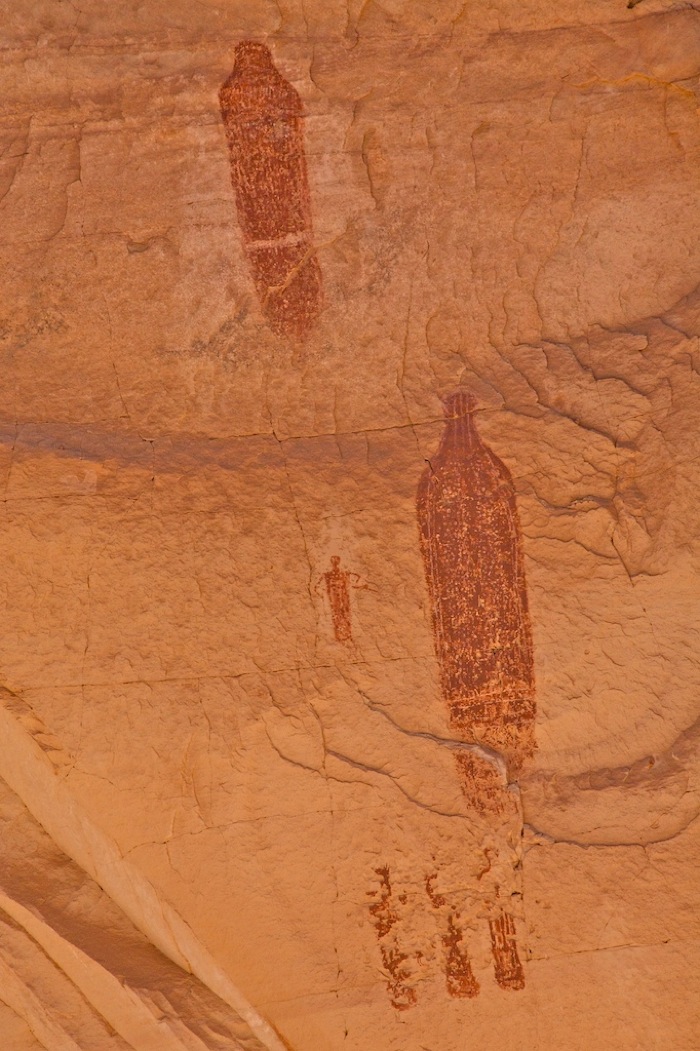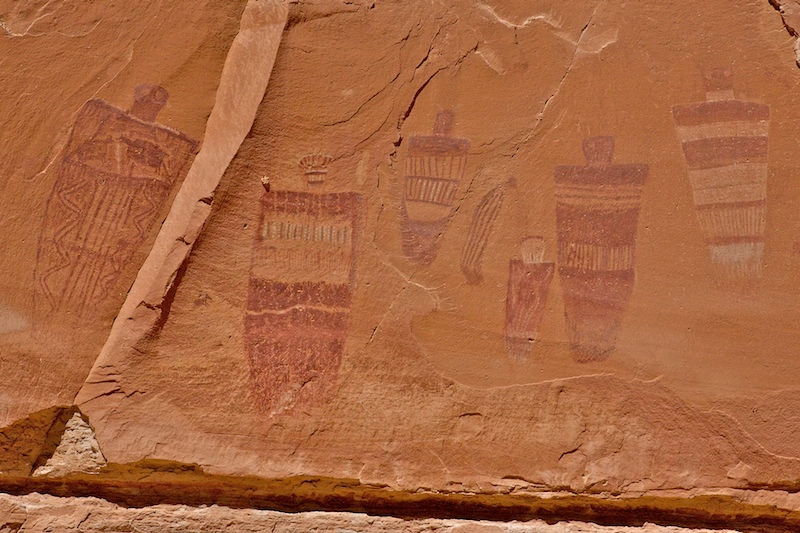|
Canyonlands National Park - Horsehoe Canyon - Late Summer
Barrier Canyon is the former name of Horseshoe Canyon. Fairly recently, some people have determined that the rock art located in this canyon constitutes the work of a unique culture that flourished in and around this canyon over 8,000 years ago. Because it was first identified here, some lay persons refer to it as the Barrier Canyon Culture. Most scholars refer to this culture as the Desert Archaic Culture and their rock art as having been done in the Barrier Canyon style. It is commonly agreed that the pictographs and petroglyphs found here predate both Ancestral Pueblo and Fremont Cultures and are quite different from those found elsewhere in the Americas. The National Park Service assigns this rock art to the late Archaic period 4,000 to 2,500 years ago.
One of the characteristics of this style of art is the large number of life size anthropomorphic "shaman" images with tapering bodies and few if any arms or legs. Other smaller images, with arms and legs are thought to be representations of people. The Barrier Canyon style is also characterized as generally having a higher percentage of human forms as compared to animal forms in any given art panel. Animal forms are not like any other that the Lizard has ever seen in any other rock art in the Southwest.
The panel pictured here is called the Great Gallery. It is the largest pictograph gallery known to exist in the country, measuring 300 feet and containing more than 60 images. One group of anthropomorphic figures in this collection is called the Holy Ghost composition. Many consider it to be the most remarkable prehistoric work of art on the Colorado Plateau. Others claim it to be one of the finest in the entire world.
|
|



